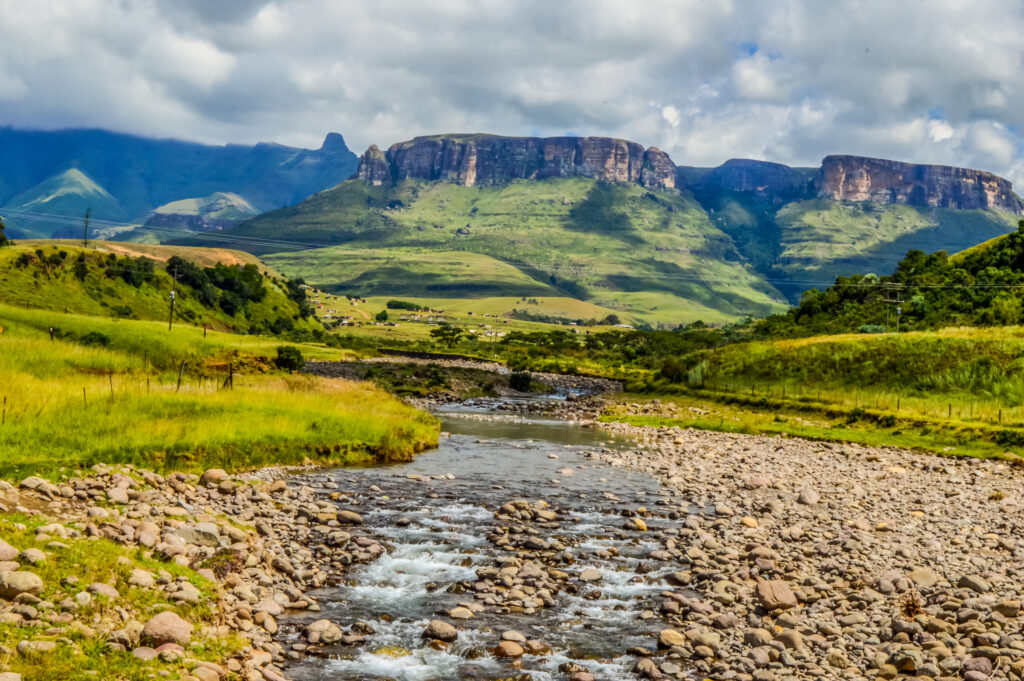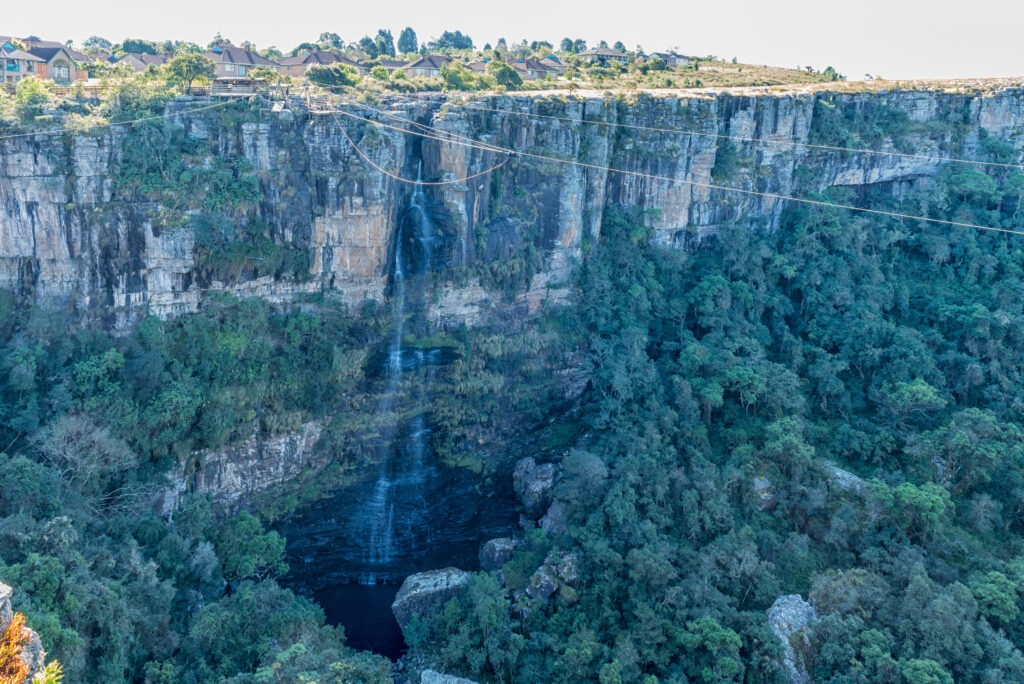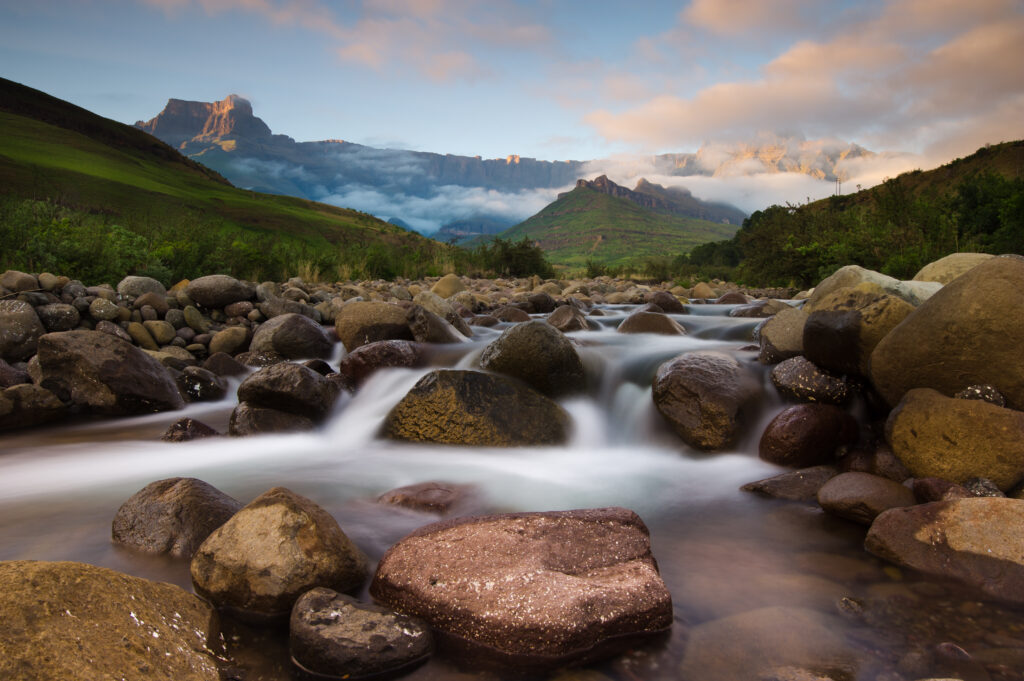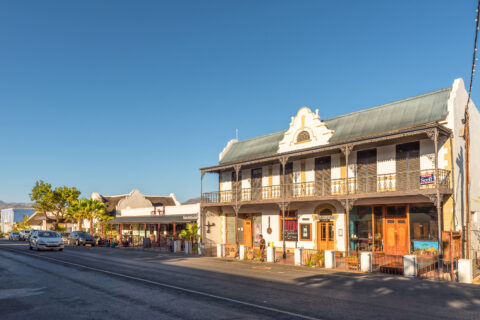Prime
Discovering The Dragon Mountains
Hands down, the uKhahlamba-Drakensberg mountain range is one of Mzansi’s most impressive natural attractions and a custodian of San heritage. No wonder it clinched status as one of KwaZulu-Natal’s two UNESCO World Heritage Sites.
A playground for self-proclaimed mountain goats, this glorious expanse of mountainous terrain stretches for more than 1 000km and is divided into three sections – the Northern, Southern and Central Drakensberg – mostly because it is so vast, covering some 2 428km2. That means you can reach the edge of its contours after a three-and-a-half-hour drive from either the Big Smog or Durbs.
You might hear the Zulus referring to the 300-kilometre section that borders Lesotho as uKhahlamba meaning “Barrier of Spears”. The name already gives you an idea of the shape of these mountainscape formations. No matter the language or culture, it conjured the same imagery within the minds of early Dutch settlers who called it Drakensberge or dragon mountains for the dorsal scales of these mythical creatures that appear to line the ridges. Whatever you choose to call it, the Berg is a highly-addictive fix for those (like me) who are fuelled by regular bursts of adrenaline and adventure.
Stand in the shadow of the Amphitheatre
The Drakensberg is undoubtedly best known for the imposing Amphitheatre that spans more than five kilometres. The cliff face is a gatekeeper of the Royal Natal National Park – dutifully watching over its northern and eastern entrances and all those who pass through it to hike its peaks.
From here, Tugela Falls – Africa’s tallest waterfall – cascades to the boulders below in a five-tiered, pin-thin stream as it carves its way to the Indian Ocean. It can even be spied from the road before you step foot through the park’s eastern entrance.
Bring your binos because numerous endemics swoop against a backdrop of summits and in the shadows of these rugged crags. Many are named in honour of their natural habitat, such as the Drakensberg Rockjumper and Drakensberg Prinia. Other species include the terrestrial Ground Woodpecker (which – as you guessed and as its name suggests – spends most of its time hopping about the ground), Gurney’s Sugarbird, Mountain Pipit, and Cape and Bearded vultures.
Float from north to south
Wipe the sleep from your eyes as you float about 1 000 metres above the ground between the Amphitheatre in the Northern Drakensberg and Giant’s Castle in the south, so that you can see how everything the light touches turns to gold – from fields and farmlands to village clusters and curvy roads. Though the wind always determines the flight route, you’re sure to spy erosion-sculptured archways, twinkling rock pools, basaltic buttresses and sandstone ramparts from a bird’s eye view. There are several hot air ballooning companies to choose from for a scenic sunrise flight, depending on the area you’re adventuring through.
www.drakensbergballooning.co.za

The world’s rock art capital
If you’re only going to do one of the countless hikes in the park, make it the 11-kilometre-long (return) Injisuthi Battle Cave Walk, which safeguards a collection of polychromatic San rock paintings dated around 3 000 years old. Some 30 000 examples of rock art are found between Royal Natal National Park and Bushman’s Neck at 500 sites where stone walls, caves, and overhangs are a canvas for history. Didima Gorge, not too far from Cathedral Peak, has the highest concentration of rock art ever found, making it the world’s rock art capital. It can only be visited with a guide, who will point out some of the most significant examples, from half-human, half-animal depictions to rhinos and hunting and battle scenes.
Not for the faint-hearted
To truly immerse yourself in the mountains, you need to zip line through the crevices of the Central Drakensberg. Folded away into an ancient indigenous forest, beneath the watchful eye of Cathkin Peak, the Drakensberg Canopy Tour is strung between cliffs and treetop platforms.
These cable slides and the elevated rockface walkway (said to have been the first in the country) allow you to soar some 60 metres above Blue Grotto with your feet dangling above the valley below. You’ll be accompanied by two guides who will not only help you to overcome your nerves, but share lots of interesting tidbits, like there are 150 resident bird species in the forest.
canopytour.co.za/locations/drakensberg

Catch ‘em if you can
The icy waterways that flow from the mountaintops through KwaZulu-Natal to the Indian Ocean, make the southern Drakensberg a natural choice for fly fishing, particularly trout. You’ll need both your flyfishing skills and a fair measure of good luck as they are reported to be very elusive. Avid fly fishermen can cast their lures at several fishing spots – such as Little Mooi River, Giant’s Castle, Bushmen’s River, Royal Natal National Park and Highmoor Nature Reserve. The latter has two rainbow trout-stocked dams.
Where to Stay: Mountain Splendour Eco Resort
Mountain Splendour Eco Resort is a family-owned resort in the Central Drakensberg with glamping tents and idyllic log cabins, as well as camping sites for those who like to rough it and aren’t afraid of creepy-crawlies.
Have your pick between luxe glamping in permanently set-up tents, where your every creature comfort is attended to, alternatively the more rustic option – the mobile “mini” glamping – offers much more of an authentic, glamping-esque accommodation experience. Beyond
the area’s incredible attractions, this eco establishment has riverside picnic sites, mountain biking trails, hiking routes and leisurely walking trails if you’re already all hiked out.

Traverse streams with sure-footed mountain steeds
The elevated height on horseback adds a new dimension to take in the Drakensberg’s unrivalled beauty as sure-footed steeds splash through icy mountain streams or lead the way to rocky halls adorned with ancient bushmen paintings.






 Sign-up and receive the Business Media MAGS newsletter OR SA Mining newsletter straight to your inbox.
Sign-up and receive the Business Media MAGS newsletter OR SA Mining newsletter straight to your inbox.